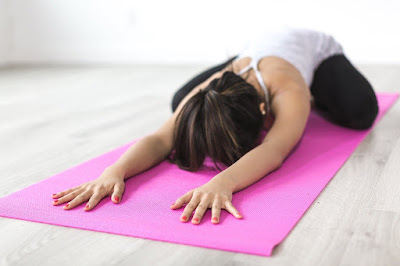Yoga As A Powerful Self-Help Tool
The word yoga means to yoke or join. It is the joining or yoking of the body, mind and spirit that occurs through the practice of yoga. The process of opening and aligning the body through postures (asanas), regulating the breath and calming the emotions through breathing practices (pranayama), touching the mind and spirit through conscious relaxation and meditation creates balance and equanimity for the individual. Yoga is a powerful self-help tool that can lead to personal transformation and growth.
Many people live their lives reacting to situations without realizing cause and effect. Something happens to them and they react and emote with out understanding the underlying dynamics and the role they play. Everyone can relate to having their "buttons" pushed and responding unconsciously and automatically. The discipline of yoga cultivates a "witness" consciousness where the individual learns to observe himself as if he were watching the scene as a detached but compassionate observer. The movement of the body is observed in asanas, the breath in pranyama and the mind in meditation. In this way one can listen, think and then consciously act. Patterns of thought, emotion, and response can be positively changed. Old habits that no longer work can be discarded and replaced with new, appropriate ones. The alignment of body, mind and spirit that occurs leads to clarity of thought and emotion.
In Western society it is common to seek psychotherapy for emotional difficulties and life crises. Psychotherapy is a very valuable tool that encourages emotional growth and healing. Psychotherapy focuses upon the mind and emotions while yoga strongly emphasizes work on the physical mental, emotional and spiritual bodies. Psychotherapy tends to keep people "in their heads" while yoga grounds them into their physical body. When psychotherapy and yoga are done conjointly the body-mind connection is established and healing is greatly accelerated.
It has been said that if you want to change your personality you can either spend years in psychotherapy or you can work with your breath. As control over the breath is achieved, the mind and the personality can change.Pranayama is a very potent yogic practice that calms the mind, the nervous system, increases respiratory function and brings the life force into the body.
The yoga asanas and pranayama help increase strength, flexibility and stamina. They tone, massage and stimulate the internal organs and enhance the functioning of the different body systems. Body tone and suppleness improve. Very often there is a new glow to the skin and a more youthful appearance. One experiences feelings of well-being, stress reduction, improved body image and self-esteem.
Positive body image and self-esteem are important for everyone and vital for the critical, self-conscious teenage years. Teenagers are bombarded with inappropriate messages about how they should look and act. Models are rail thin and there is a pervasive sexual suggestiveness that confuses teens. Eating disorders are of epic proportions. Yoga postures, breath work and relaxation techniques would be an incredibly valuable tool for adolescents.
The yogic diet emphasizes a healthy balance of nutritious food that is eaten with gratitude, awareness, and moderation. Meals are a time of quiet and calm, filling the belly only with as much food as is needed to feel pleasantly full. The traditional yogic diet is vegetarian, based upon ahimsa or non-violence. However, one can follow the basic tenets of the diet without being a vegetarian.
Yoga has been utilized successfully in twelve step programs such as alcoholics anonymous and over eaters anonymous. In these programs, individual power is given to a higher power. In yoga there is a belief in oneness with all living things and in a God. (However, yoga is not a religion, but a philosophy). The discipline of yoga provides a structure in which the conscious use of body, breath, and spirit helps unite the splintered parts of an individual. It speaks to the hunger for spiritual connection with oneself, others and the divine and helps fill the spiritual emptiness that leads many people to addictions.
Diligent practice of yoga develops one-pointed focus and concentration. As one performs asanas, pranayama, relaxation and meditation the mind become trained to focus on one thing at a time. Concentration and absorption in yoga (and other things like work and sports…) increase and clarity of thought improves. The mind quiets as some of the noisy chatter recedes. Periods of calmness, clarity and focus become longer. Stress decreases as we are better able to handle the inherent challenges of life.
We are rewarded by our use of yoga as self-help tool. Yoga is a very portable discipline. All one needs is a quiet space to do postures, breath work, relaxation and meditation. Once the basics are learned they are with you forever, easily retrieved when needed.


Post a Comment for "Yoga As A Powerful Self-Help Tool"
Post a Comment